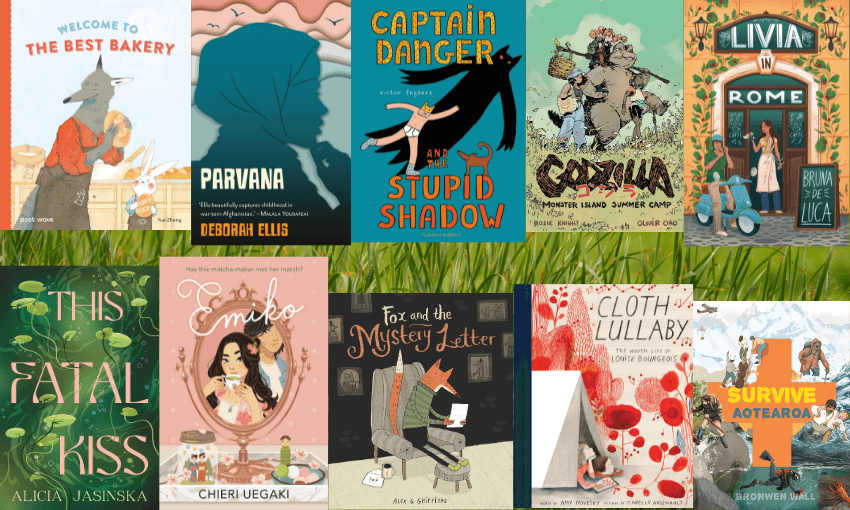Auckland reviewer David Larsen selects the blockbuster Barrowman bio as his best of the year, and then journeys into the genre of sci-fi and fantasy and that.
No question, my book of 2015 was Maurice Gee: Life and Work, by Rachel Barrowman. Long years of research and thought went into this: so often fatal. But Barrowman does not plunge you into her accumulated data and leave you there while it sets around you like concrete. She tells the story of a great New Zealand life the way we would all hope and fear to have our stories told: irresistably. Judicious, elegant writing, studded with intelligent assessments of Gee’s novels and their origins in his mental landscape. Also, as good an evocation of a century of social change (we come in with the Gee grandparents) as I’ve ever read.
I enjoyed The Martian – the film, not the book – quite a bit. (Tried the book. Couldn’t deal with it.) But anyone who imagines it won’t exert undue influence on NASA funding and the politics of manned Mars missions hasn’t paid attention to the effect Top Gun had on US air force recruitment, lo these many years ago. Interesting, then, that the man who in the nineties wrote the great novel of Mars colonisation, Kim Stanley Robinson, should this year write a great novel in which the whole project of space colonisation emerges as a dangerous folly. Aurora rests on a deep foundation of informed scientific speculation, but it isn’t a textbook in drag. (*cough* The Martian *cough*). A rich cast of typically complex and ambiguous Robinson characters, all of whom happen to live on humanity’s first starship, drive a story of idealistic, multi-generational exploration. The problem: the universe is very big, and the laws of physics are real. Not necessarily a tragic novel; but space utopians may find it unpleasantly bracing.
If you read The New Yorker, you’ve maybe noticed that some of their best covers are drawn by Adrian Tomine. He rose to fame as the creator of Optic Nerve, a short story comic series he started writing and drawing in his teens, and has continued on and off ever since. Every few years, selections from the comics are reprinted between hard covers. All of this I only discovered this year, after the latest volume, Killing and Dying, blew my mind and sent me off looking for more. Six stories of everyday life, variously funny, disturbing, dream-like, in a range of styles from playfully cartoony to near-photo-realism, all concise and sharply well observed.
I read too many Ambitious Big Novels this year and failed to love them. Neal Stephenson’s Seveneves came closest; Amitav Ghosh’s long-awaited third Ibis novel, Flood of Fire, and Marlon James’s yes-I-know-it-won-the-Booker A Brief History of Seven Killings were both of them impressively polyphonic and, sigh, admirable-I-guess; and reader, I debated setting my proof of Garth Risk Hallberg’s City On Fire on fire, but it felt too large a gesture, so I just bunged it in the recycling. Against that backdrop, it was a relief, as well as a thrill, to have two grand-opera-scale stories capture my attention. Both are serialised graphic novels, appearing as ongoing comics series from Image (the company which gave the world The Walking Dead, which, for the record, I count against it.)
Morning Glories, written by Nick Spencer and drawn by Joe Eisma, is basically The Prisoner crossed with Lost: a madly intricate conspiracy story in which a core cast of teenagers enroll at an elite boarding school and discover the teachers are using them as pawns in an evil plan, eveyone has something to hide, and there may possibly be a monster in the basement. Nearing the halfway mark of its projected 100-issue run, this story seems to know exactly where it’s going, but the route it’s taking is impressively devious.
Meanwhile, the boldly named Saga, by writer Brian K. Vaughan and artist Fiona Staples, turns out to live up to its name. Imagine a big budget science fiction fantasy space opera fusion epic, contemporary as next week’s hot new app and timeless as my eleven year old self fondly imagined Star Wars would turn out to be. Have you imagined it? This one’s better.
Jo Walton is an omnivorous reader and a playful writer. Her collection of essays on classics of science fiction and fantasy, What Makes This Book So Great, includes, besides the splendid entry “Knights Who Say Fuck: Swearing In Genre Fiction”, considerations of The Bone People and Middlemarch within a genre context; her Tooth and Claw reimagines a Trollope novel as it might have been if all the characters were dragons. She is, in other words, exactly the person to tell the story of Plato’s Republic, had it been taken from thought experiment to actual utopian city-state by time-travelling philosophers and a pair of enigmatic Greek gods. The Just City is the book that surprised me in the best ways this year.



